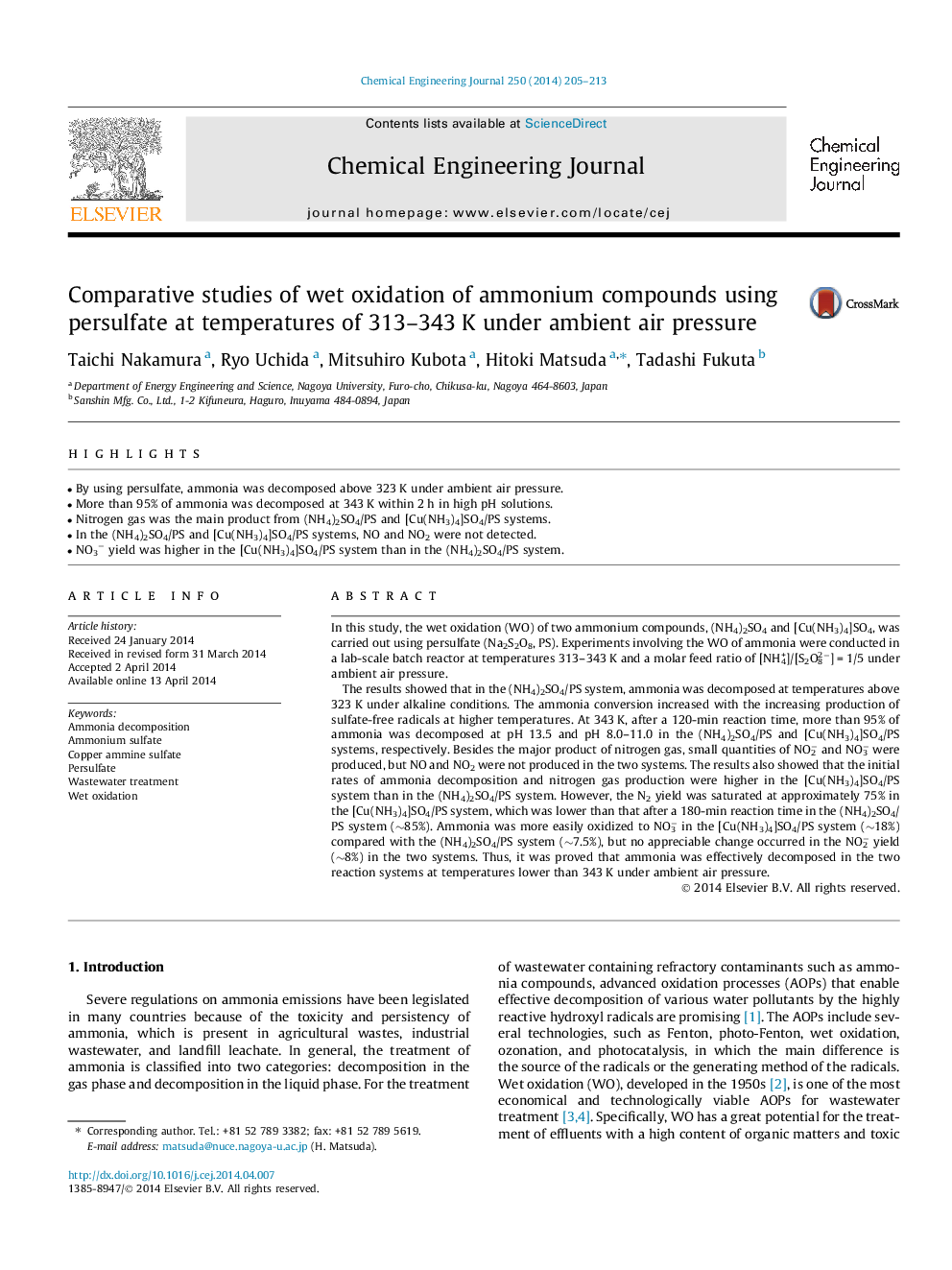| Article ID | Journal | Published Year | Pages | File Type |
|---|---|---|---|---|
| 147356 | Chemical Engineering Journal | 2014 | 9 Pages |
•By using persulfate, ammonia was decomposed above 323 K under ambient air pressure.•More than 95% of ammonia was decomposed at 343 K within 2 h in high pH solutions.•Nitrogen gas was the main product from (NH4)2SO4/PS and [Cu(NH3)4]SO4/PS systems.•In the (NH4)2SO4/PS and [Cu(NH3)4]SO4/PS systems, NO and NO2 were not detected.•NO3− yield was higher in the [Cu(NH3)4]SO4/PS system than in the (NH4)2SO4/PS system.
In this study, the wet oxidation (WO) of two ammonium compounds, (NH4)2SO4 and [Cu(NH3)4]SO4, was carried out using persulfate (Na2S2O8, PS). Experiments involving the WO of ammonia were conducted in a lab-scale batch reactor at temperatures 313–343 K and a molar feed ratio of [NH4+]/[S2O82−] = 1/5 under ambient air pressure.The results showed that in the (NH4)2SO4/PS system, ammonia was decomposed at temperatures above 323 K under alkaline conditions. The ammonia conversion increased with the increasing production of sulfate-free radicals at higher temperatures. At 343 K, after a 120-min reaction time, more than 95% of ammonia was decomposed at pH 13.5 and pH 8.0–11.0 in the (NH4)2SO4/PS and [Cu(NH3)4]SO4/PS systems, respectively. Besides the major product of nitrogen gas, small quantities of NO2− and NO3− were produced, but NO and NO2 were not produced in the two systems. The results also showed that the initial rates of ammonia decomposition and nitrogen gas production were higher in the [Cu(NH3)4]SO4/PS system than in the (NH4)2SO4/PS system. However, the N2 yield was saturated at approximately 75% in the [Cu(NH3)4]SO4/PS system, which was lower than that after a 180-min reaction time in the (NH4)2SO4/PS system (∼85%). Ammonia was more easily oxidized to NO3− in the [Cu(NH3)4]SO4/PS system (∼18%) compared with the (NH4)2SO4/PS system (∼7.5%), but no appreciable change occurred in the NO2− yield (∼8%) in the two systems. Thus, it was proved that ammonia was effectively decomposed in the two reaction systems at temperatures lower than 343 K under ambient air pressure.
